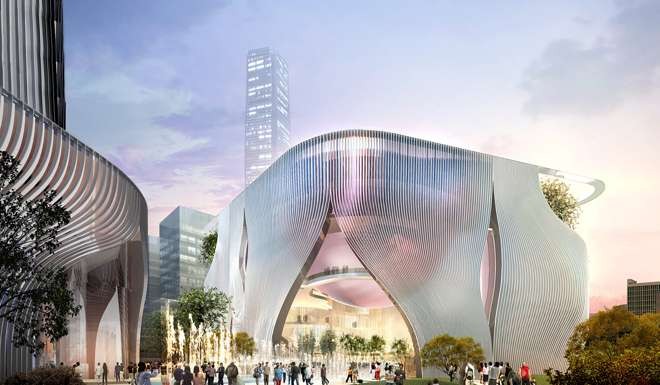
Critic blasts Hong Kong’s arts policy but hopes Palace Museum can be ‘steroid’ that revives cultural hub
Theatre producer Mathias Woo had the museum idea 10 years ago but says neglect of the humanities means the support structure no longer exists
Fundamental flaws in the city’s art scene existed long before the controversy of the Palace Museum, a leading critic says, but he hoped the project could act as a “steroid” to save the deficit-plagued West Kowloon cultural hub.
Mathias Woo Yan-wai, a theatre director with a background in architecture, said he had mixed feelings about a local version of Beijing’s landmark museum, an idea he himself proposed in a book published in 2007, almost 10 years before the HK$3.5 billion plan was announced last December.
“Of course I welcome the Palace Museum project in West Kowloon, but it’s a sheer tragedy for it to happen now compared to the time when I proposed it,” Woo told the Post.
“Over the past 10 years, most museum-related humanities subjects such as archaeology have been shrunk or scrapped at major local universities. So what do we have now to support the project?”
To run a museum, he said, four basic components were required: curating, technical support, outreach and administration.
“All these need humanities-trained individuals to operate, but literature, history and philosophy have been sidelined in tertiary education in recent years, so I hope the Palace Museum project will spur a revival in those subjects,” he said on the eve of the University of Hong Kong receiving HK$1.1 million on Thursday from The Andrew W. Mellon Foundation for museum and conservation studies, which he described as “too little, too late”.

“Those committees are like kaifong [neighbourhood] welfare associations including sons and daughters of tycoons who know little about art. The system should be arts practitioner-driven.”
World-class institutions would definitely withdraw their offer if you asked them to through a public consultation first
“Tell me why a green light was given to Xiqu Centre, where each seat there will cost HK$25 million, and why the original Norman Foster design would cost an extra HK$20 billion just for 2,000 underground parking spaces?” he asked, referring to the 1,100-seat venue for Chinese traditional opera built at a cost of HK$2.8 billion.
But he agreed that it would be proper to go through the existing West Kowloon Cultural District Authority consultation panel despite the risk of rejection in the process.
“World-class institutions like Musée du Louvre and Beijing Palace Museum would definitely withdraw their offer if you asked them to through a public consultation first.”
Woo felt the project could be beneficial in the long run. “The Hong Kong Palace Museum could be the steroid to save the rest of the West Kowloon facilities doomed to fail in terms of visitors and income.”
“The authority has not released any information about its operation plan for each of the cultural facilities it will run in the future,” he said.
“Such a business plan would enable us to estimate its annual recurrent cost, programme cost and income model, which would shed light on the retail and business side of WKCD in line with arts and culture to make sure it would not end up a high-end shopping hub for the rich.”
The authority has already obtained HK$21.6 billion for construction of the first two phases on the 40-hectare site.
Without an “expenditures model” and figures, Woo said a judgment on the sales of development rights in West Kowloon would be difficult and he did not feel comfortable about the prospect, given the track record of Cyberport.
That project was meant to operate as a hub for hi-tech businesses, but critics claim it is nothing but a glorified property development.

